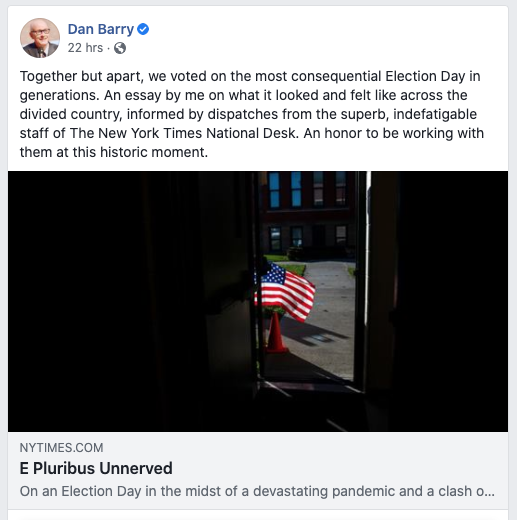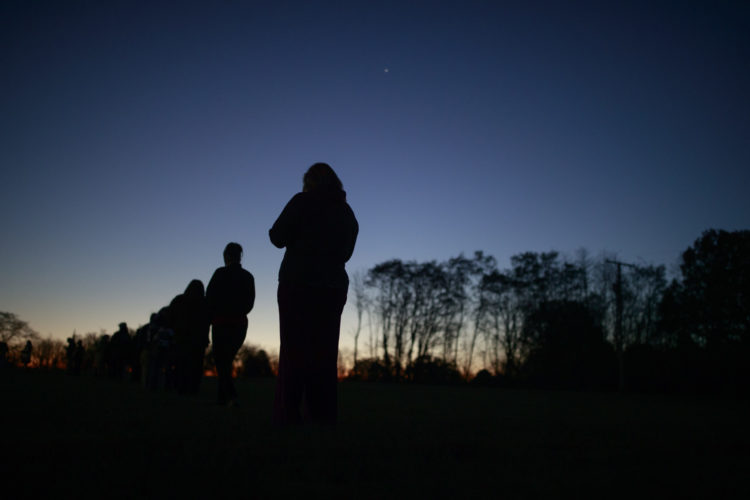EDITOR'S NOTE: Headlines on a story often change as the story is updated, or is published on different platforms. That apparently is what happened in a New York Times story published Nov. 4, 2020, about the mood of America on Election Day. An early online headline captured the attention of author and editor Constance Hale and led to this short essay. It can be seen, in a screengrab from Facebook, at the bottom of the post.
Oh, how I love a headline that shoots like an arrow, straight through the news of the day, to lodge in the human heart. That’s what I saw Wednesday, noonish in California, when I caught a glimpse of the New York Times home page.
E Pluribus Unnerved
I’d stayed awake until after midnight Tuesday night in California, pulling down the covers right after Judy Woodruff signed off on the PBSNewsHour, acknowledging as she did that it was 3 a.m. Wednesday in Washington, D.C., and hours and hours and hours until a president of the republic would be declared. I woke at 4 a.m. to check the phone, managed to get back to sleep, and woke again at 7 a.m. with a pain in my back and a sense of dread. Checked the phone again before coffee, absorbing a glimmer of what, from my perspective, was good news: Despite President Trump’s baseless charges of fraud — and victory — votes would continue to be counted, and they might actually break in favor of democracy, not autocracy.
I've always considered Dan Barry our national journalist-bard, and I was delighted to see that he’d consigned his impressions of Tuesday's election to the page. His story captures every bit of the unsettlement that attended me on that day. His lede:
Struggling through one of the most devastating years in the history of the United States, a year of strife and suffering and loss, the nation’s people responded with resolve on the first Tuesday of November. Together but apart, they voted.
Fear and anxiety abound, Barry continued, noting that plywood had been hammered into place over storefronts in cities across the country “in anticipation of election-related mayhem that, for the most part, never materialized.”
The day wore on and the news, from my perspective, got better. As it happened, my work that day was to write a post about narrative structure and plot in poetry. The coincidence was not lost on me: My favorite journalist told a story truer than I could find words for, and someone — likely an anonymous copy editor — crafted a headline that is a bit of plot in poetry. And not only that: it made me feel less desperate, and less alone: E Pluribus Unnerved.

Constance Hale is a California journalist and the author of six books, including the writing primer Sin and Syntax. Her work has appeared in the New York Times, the LA Times, the Atlantic, Honolulu, Smithsonian, Wired, and many other newspapers and magazines. From 2007-2010 she taught writing at the Nieman Foundation for Journalism.



